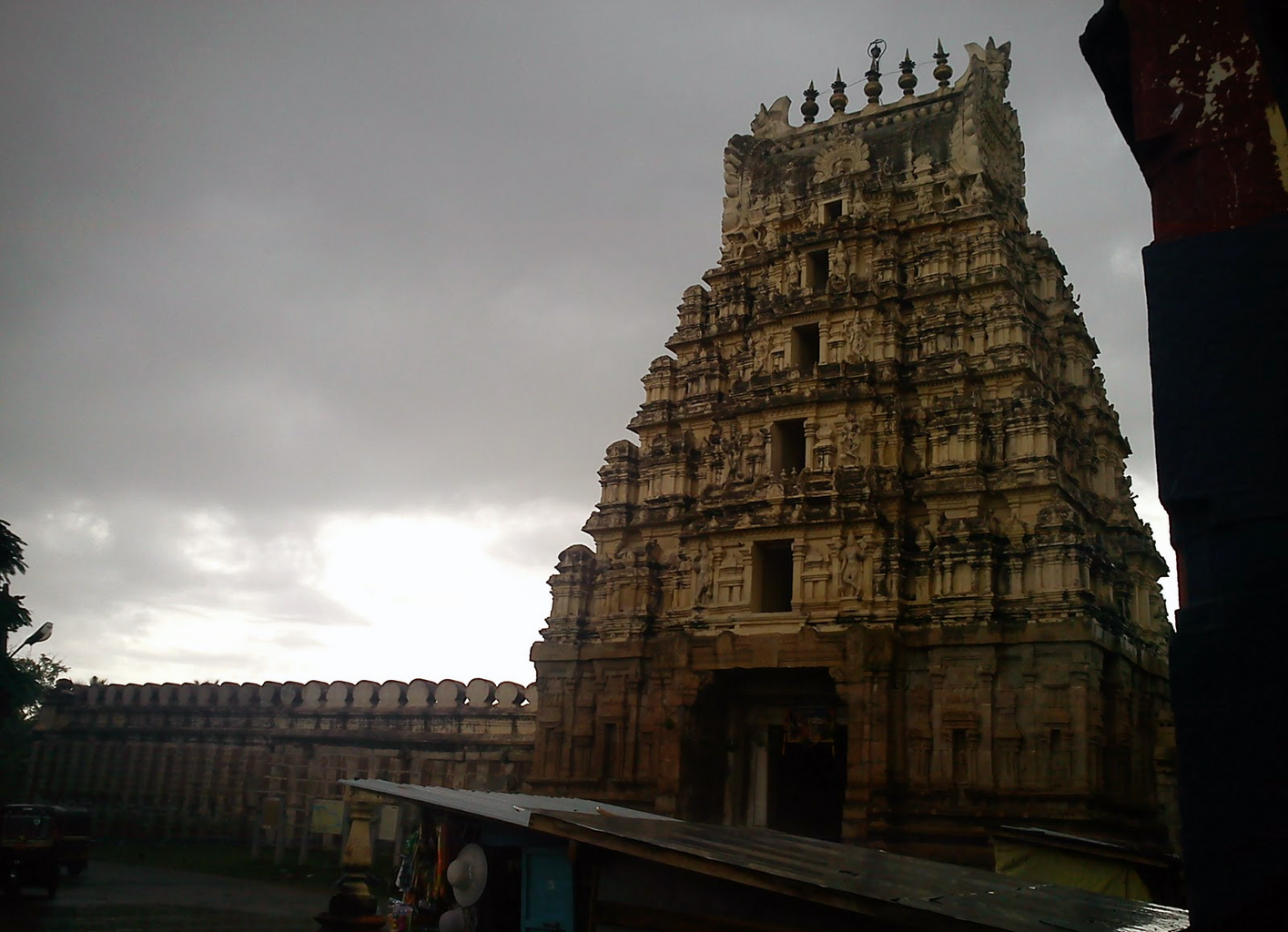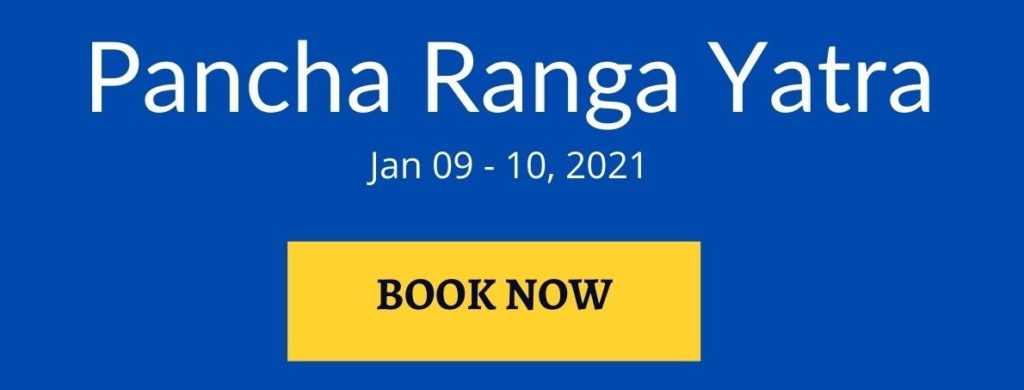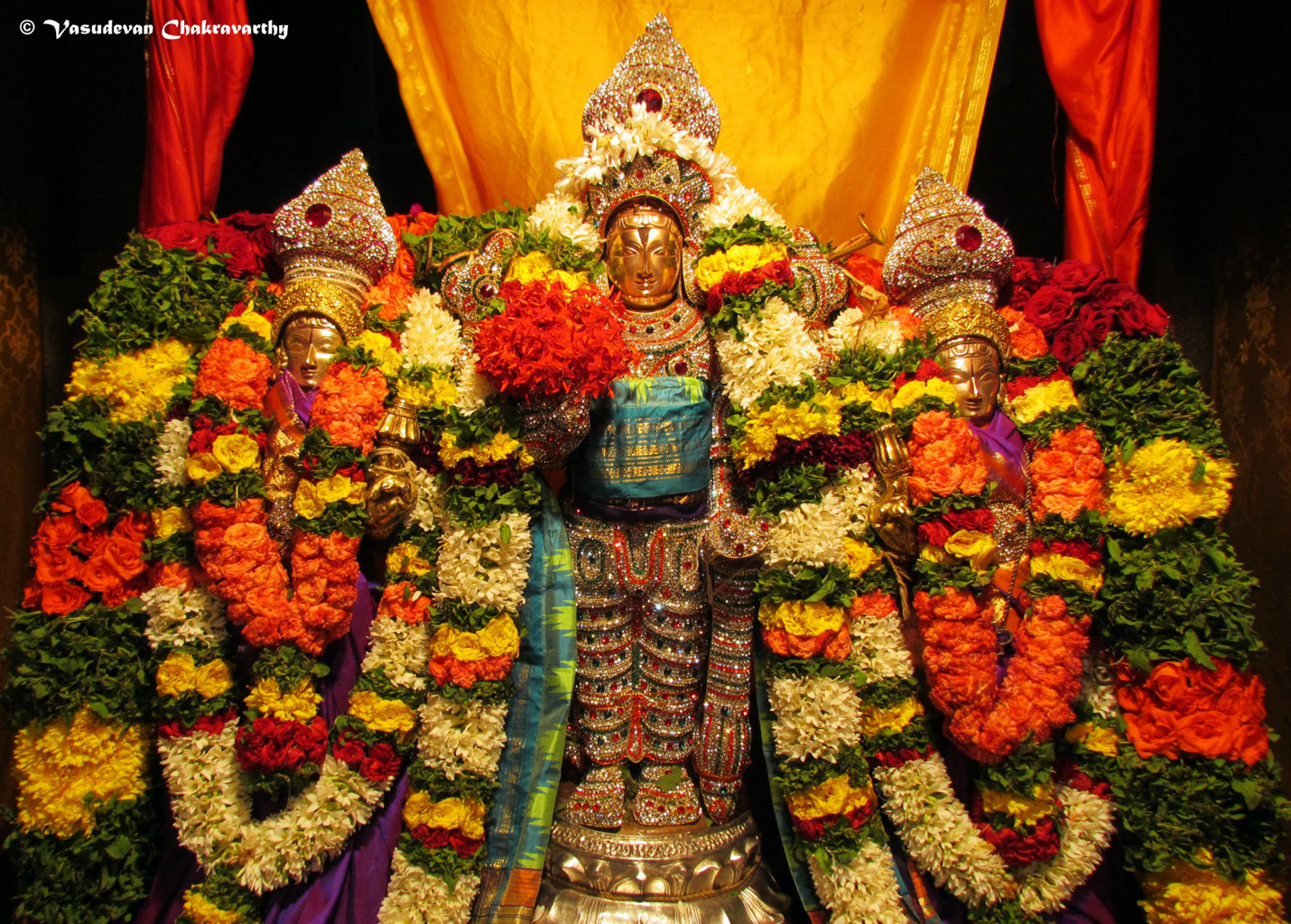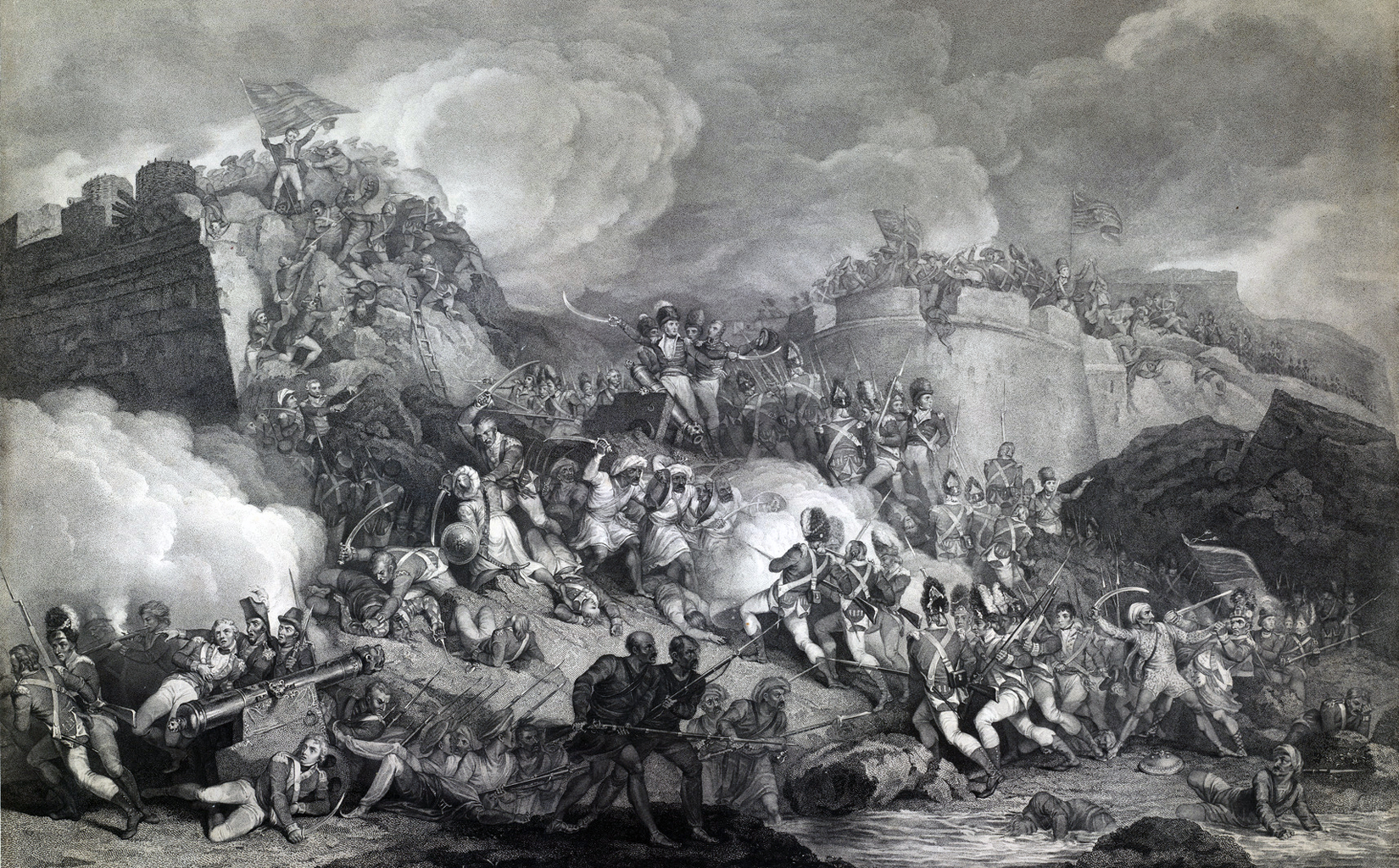
Srirangapatna was earlier known as Srirangapuri. This town is on an island being surrounded by the River Kaveri. It is known for the temples of Sri Ranganatha, Sri Lakshmi Narasimha, Sri Gangadhareshwara, Sri Jyotirmaheshwara and the other small temples. Amongst them all the main temple is that of Lord Ranganatha.
Lord Ranganatha has manifested Himself in three places – in the east at Srirangam, in the south at Ananthashayanam and in the west at Srirangapatna. At these three places, the Deities of Lord Ranganatha are swayambhu (self-manifested), meaning They are not carved by anyone. Srirangapatna is considered to be a very sacred place by the devotees.
Why the Lord manifested at Srirangapatna?
Many people take holy bath in River Kaveri in order to get rid themselves of the sins have committed. Even Ganges would come and rid the sins of people she had absorbed. Kaveri became overburdened with all these sins. The only refuge she had was Lord Vishnu. She performed austerities at Srirangapatna which is at the confluence of the three channels of Kaveri, to please Lord Vishnu. The Lord was pleased by her austerities and awarded her three benedictions:
1) The River Kaveri would have greater sanctity than the River Ganges.
2) Srirangapatna would become a place of pilgrimage.
3) Lord Vishnu would manifest Himself here as Lord Ranganatha to bless devotees and fulfill their desires.
After being awarded these benedictions, Kaveri worshipped the Lord. The Lord then manifested Himself as a very beautiful Deity, resting on the serpent Adisesha. Hearing this, Lakshmi, who is the consort of Lord Vishnu came to have darshan of the Lord, along with Kaveri. She, then bathe in the sacred river, and after worshipping the Lord, manifested Herself as a Deity on the South east side of the Lord.
After Their Lordships manifested Themselves as Deities, Lord Brahma built temples for Them. Devatas then worshiped Lord Ranganatha at Srirangapatna.
Rediscovering the Deity of Lord Ranganatha
Once, there was a terrible famine in the country and the sages found it difficult to get water for bathing, etc. They went in search of a suitable place for their ablutions. On their way, they came to the hermitage of Sage Gautama, on the bank of River Godavari. Gautama was very pleased with the arrival of the sages and welcomed them. He requested them to remain in his hermitage for some time more.
On his way to the river, Gautama sowed the paddy seeds in fields, with the help of his disciples. He returned from the river after offering ablutions. In the meantime, his disciples brought the corn, which had already grown, and prepared a delicious feast for the sages.
On seeing such a good feast served to them, some of the sages became envious of sage Gautama. They then planned to drive away Sage Gautama from the hermitage. The next day, they created a cow by their mystic power. She grazed the corn in the field of Gautama. While returning from the river, Gautama saw the cow and asked his disciples to drive it away; the disciples did so. The cow ran to Gautama and fell dead at his feet. Immediately the sages loudly cried out that Gautama killed the cow. Gautama realized that this was the evil plan of sages and cursed them to be evil and cruel.
After this incident, he went on a pilgrimage. On the way, he reached Sri Rangam, and prayed to Lord Ranganatha there. The Lord appeared before him and said that at Srirangam, He was being served by Vibhishana, and that Gautama might go to the sacred place, where Adiranga had established Himself. As directed by the Lord, Gautama went in search of this place. On his way, he had darshan of the River Tamraparni, the Mahendra Mountain, the Sahyadri Hills and the birthplace of Kaveri. Then being accompanied by a number of sages, he came to Srirangapatna and continued to live there.
Once, when he was narrating the glories of Lord Ranganatha, a group of sages such as Bodhayana, Atri, Yajnavalkya, Kanva, Shuka, Parashara came there. Gautama became very jubilant on their arrival and welcomed them all. Under the leadership of Sage Gautama, all the sages performed a sacrifice worshipping Lord Ranganatha. Pleased by their sacrifice, Lord Ranganatha appeared before them and blessed them. He instructed Gautama that His Deity was lying hidden the nearby grove of tulasi and was covered in an ant-hill.
All the Sages and the devatas saw the huge ant-hill in the tulasi grove as told by the Lord. They paid obeisances before it. Then the ant-hill was removed using the milk of Kamadhenu. All the devotees present there had darshan of the magnificent Lord. Lord Ranganatha’s face radiated with great splendour. He laid resting on Adisesha, with His head resting on His right arm. His left arm stretched over His body, Lakshmi-devi on His chest and Kaveri praying at His feet. Along with the devatas, Sage Gautama glorified the Supreme Lord. Lord Ranganatha was pleased with the prayers and blessed Sage Gautama that Srirangapatna would be called after him as Gautama-kshetra, and the temple would be called as Brahmananda Vimana. They also had darshan of Srimati Ranganayaki to the south east of the Lord. After having darshan, they performed parikrama of the Lord.
This was in the month of Mesha, on the 7th day of Shukla paksha. Later, Gautama learnt pancharatrika method of worship from Narada and worshipped the Lord. The day on which Sage Gautama first worshipped the Lord is celebrated every year as Sri Ranga Jayanti. On this day, the celebrations begin with abhishekam in the early morning hours, and then the Vairagi seva is performed. Gautama-puja and Mahamangala-arati are also offered to Lord Ranganatha. In the night Lord Ranganatha is adorned with Rajamudi and taken on a procession. From the next day, Gautama commenced Sri Ranga Saptaha lasting for a week. On the last day of Ranga Saptaha, the Lord gave darshan on Garuda. Even today this day is celebrated every year as Garuda utsava.
Glories of Lord Ranganatha Temple in Srirangapatna
The sages who had accompanied Gautama to this place decided to stay here. The month of Thula commenced. During this month the River Ganges exists in River Kaveri, to purify herself of the sins begotten from the persons taking a dip in her. The sages desired to award sanctity to this place during the thula month and prayed to Lord Ranganatha. The Lord fulfilled the request of the sages and blessed them by saying that a bath in the Ashtatirtha on the 10th day of the Krishna paksha in thula month, would fulfil the desires of devotees and award them liberation. A three days stay on the banks of the River Ganges, a five days stay on the banks of the River Yamuna, or a mere dip in the River Kaveri will eradicate the sins of a person. People living in the places where the wind of Kaveri blows attain liberation. Even the darshan of the river will just wash off one’s sins.
Once, the Gandharva princes, Chitrasena and Chitranath fell in love with Sachi, the wife of Indra. Being angry, Indra cursed them to born as demons. While wandering, these two demons came to Gautama-kshetra. After bathing in the River Kaveri on the purnima day of the Thula month and having darshan of Lord Ranganatha, they got purified of their sins and went back to heaven attaining heavenly form.
These glories of Lord Ranganatha were narrated by Lord Parameshwara to Narada Muni. On hearing such a wonderful pastime, Narada became ecstatic and offered His obeisance to the Lord. Those who hear or read this pastime of Lord Ranganatha will attain the blessings of the Lord and achieve liberation.
The History of Lord Ranganatha Temple in Srirangapatna
The garbha-gudi or sanctum-sanctorum of Lord Ranganatha Temple in Srirangapatna was built in 817 AD by Hambi – a dancer. In the year 894 AD, during the rule of Ganga dynasty, King Thirumalaraya got the Navaranga Mantapa and the temple of Lord Thirumala constructed on the left side portion of the Mahadvara. In the year 1717 AD when Sri Ramanujacharya came here, a Jain king by name Hoysala Bittideva was the ruler. He was defeated by Sri Ramanujacharaya in a debate; Bittiraya accepted Sri Vaishnavism and was awarded the name Vishnu Vardhana. He was a great devotee of the Lord.
King Vishnu Vardhana donated lot of wealth and the land of eight villages to Sri Ramanujacharya. Ramanujacharya nominated certain office bearers named as Prabhus or Hebbars to administer over the service of the Lord. In the year 1454 AD, a Hebbar named Thinnanna went to Vijayanagara and became an official called as the Nayaka in the court of Vijayanagara. He returned from Vijayanagara and got the outer fort for the town and the big wall for the temple and the big gate in front constructed.
The devotion of Hyder Ali to Sri Ranganatha
From the year 1610 AD to 1699 AD, the town of Srirangapatna was the capital of the Mysuru kingdom. In the year 1690-91 AD, the Mysuru king Sri Mummadi Krishnaraja Wadiyar appointed Hyder Ali as the commander-in-chief. Hyder was a great devotee of Lord Ranganatha.
Once, when enemy troops had entered into the border of Mysuru territory, Hyder started with an army, to stop the enemy. However the enemy was stronger and Hyder’s army was stuck between the River Godavari and the enemy troops. Hyder was confused and despondent. He prayed to Lord Ranganatha for help. Immediately the river dried up, so that the Mysuru army could cross the river. When the enemy troops tried to follow them, the river was in floods and the enemy could not cross it. Hyder returned with his army safely to Srirangapatna and once again, after offering prayers to the Lord, he started with his army to fight the enemy and returned victoriously.
Every year in the month of Dhanur, from the 21st day onwards grand utsava of the Lord called Kotarotsava is held. For the celebrations, a big kothara was constructed and on the day of the utsava, it is decorated to appear magnificent. This mantapa is also called as Ranga-mahal. During the Kotarotsava, each day, seva is offered by the royal family. On the 9th day, the Lord is adorned in Mohini alankara and the seva is performed by the Maharaja. Music and dance performances for the pleasure of the Lord, add to the undiminishing charm of this festival. To witness the festival, many people including the members of royal family, Hyder, and Hyder’s people would gather in the temple.
In the year 1774 AD, when the Kotarotsava was being celebrated, on the 8th day, all of a sudden, a fire broke. The Maharaja was hurt little by this little accident. In order to avoid any inconvenience to the festival in future, Hyder instantly got a stone mantapa constructed at the very same place. The next day, the new mantapa was ready before the commencement of the festival. The new mantapa was named Pathala mantapa. From then onwards, the Kotarotsavas are celebrated in the Pathala mantapa.
Sri Ranganatha Temple during the reign of Tipu Sultan
After the death of Hyder in 1782 AD, his son, Tipu became the commander-in-chief of Mysuru army. Tipu drove the king out and became the sultan himself. Then the Mummadi Krishnaraja Wadiyar was only 5 years old. In order to protect him from Muslims, he was kept in the 5th floor of the temple tower. During his rule, some of the temples were also destroyed.
On seeing that the temples were being destroyed, priests of some temples protected the temples by putting on rooves similar to that of houses on the temples. One such temple is Sri Janardhana Temple in the Poornaiah street in the town. The priests of other smaller temples brought the Deities secretly to Ranganatha temple and installed them within the temple. These Deities are of Lord Krishna, Sri Pattabhirama and Sri Gopala Krishna playing on the flute. All these Deities are marvel of beauty. No one dared to cause any damage to Sri Ranganatha temple as Hyder was the devotee of Lord Ranganatha.
In the fight with British, Tipu was defeated. He had to pay a large sum of money as tribute to the British. But he had no sufficient money with him. He took few valuable ornaments from the temple and gave them to the English. Later some of the ornaments went into the hands of the French and then moved to Russians. They can be seen even now in the Kremlin.
The remaining ornaments were those of Lord Ranganatha. These were considered to be the donation of Tipu. On them he got the following line carved ‘donated by Tipu Sultan’. When Srirangapatna fell into the hands of the British in 1799 AD, Mummadi Krishnaraja Wadiyar made Mysuru as his capital and appointed Poornaiah, as his divan. This king continued to get puja done on the ninth day of Kotarotsava. He got a mantapa constructed in his birthplace and arranged for the procession of the Lord to the mantapa. Later 4th Krishnaraja Wadiyar got constructed the Sri Chamarajendra Memorial, in memory of his father. He also got constructed the flight of steps to Kaveri, so that the devotees can easily get down to the river to take holy bath. This place is called as Rajghat. Later the mantapa which was originally constructed by the Mummadi Krishnaraja Wadiyar was enlarged and around it a garden of flowers and tulasi was made for the use of Lord’s worship. The Lord would be taken in a procession to this mantapa on the birthday of Mummadi Krishnaraja Wadiyar. The celebrations on that day would be called the Sakarapongala utsava.
Thus, the town of Srirangapatna has a glorious history attached to it. Since a long time, it has been a place of pilgrimage. Devotees continue to visit this holy place and receive the blessings of Lord Ranganatha.
1













Comment On All You Need to Know About Ranganatha Temple in Srirangapatna
Suparna Bhattacharya
It’s a very beautiful & peaceful , enlighten religious place